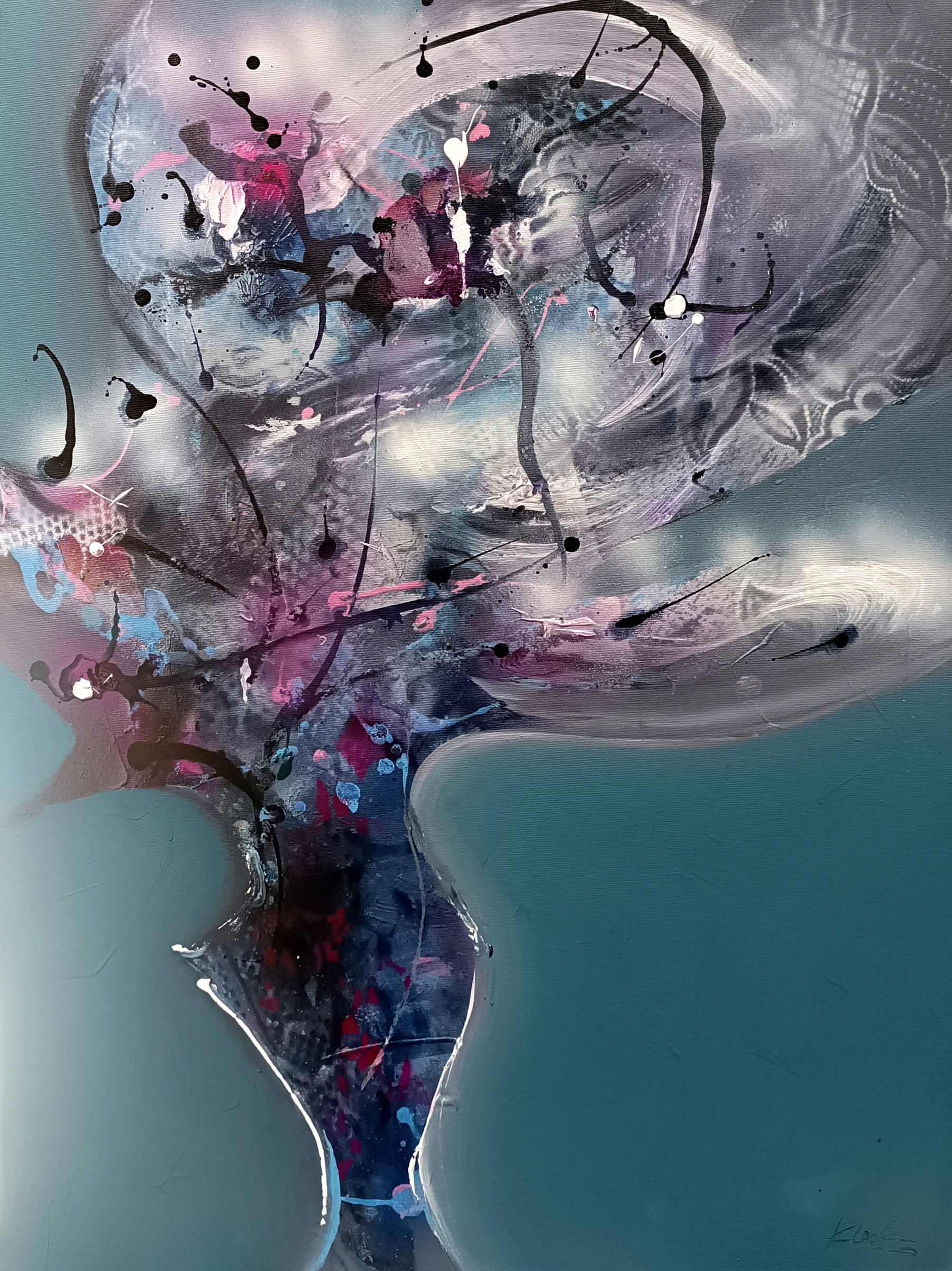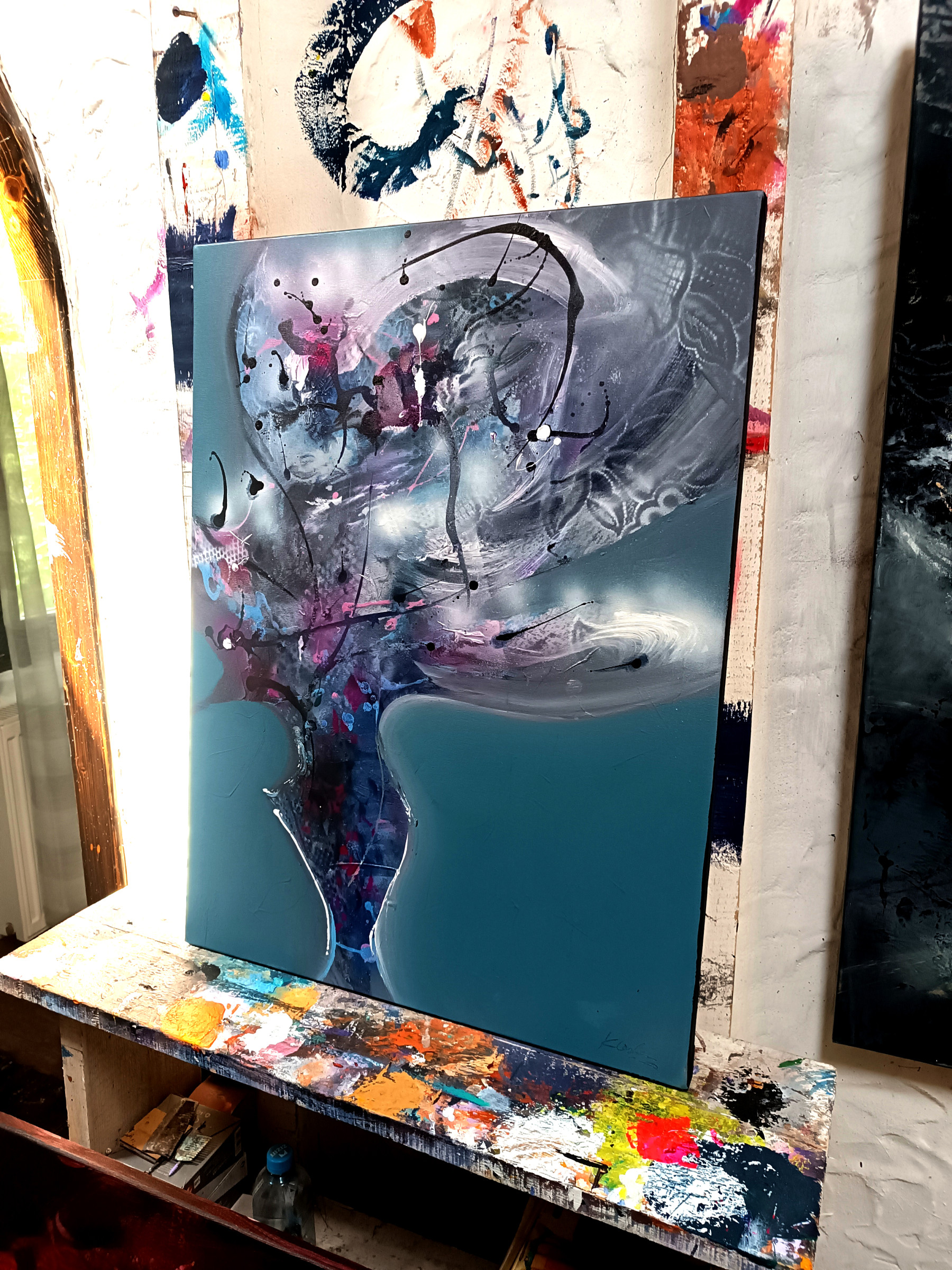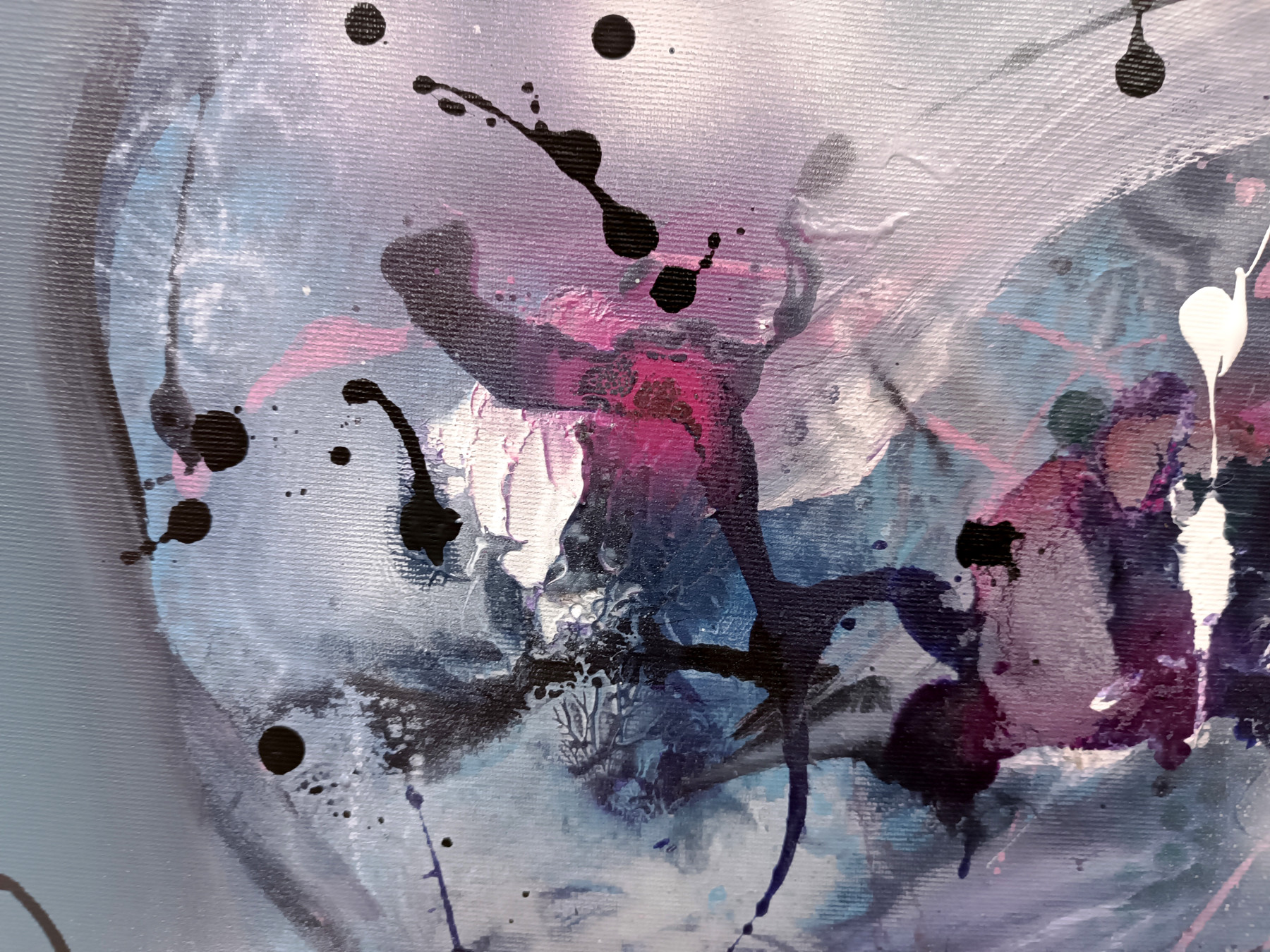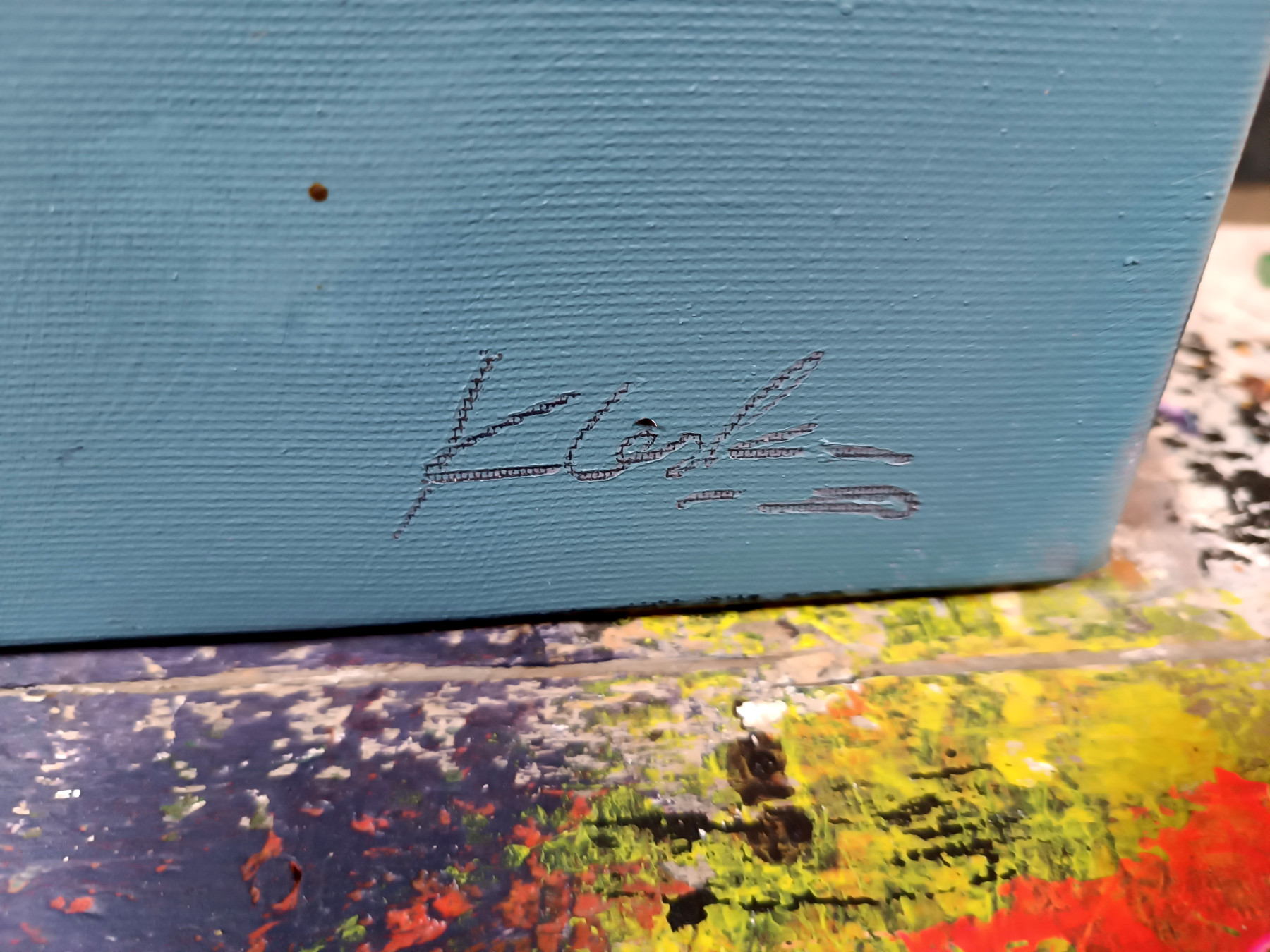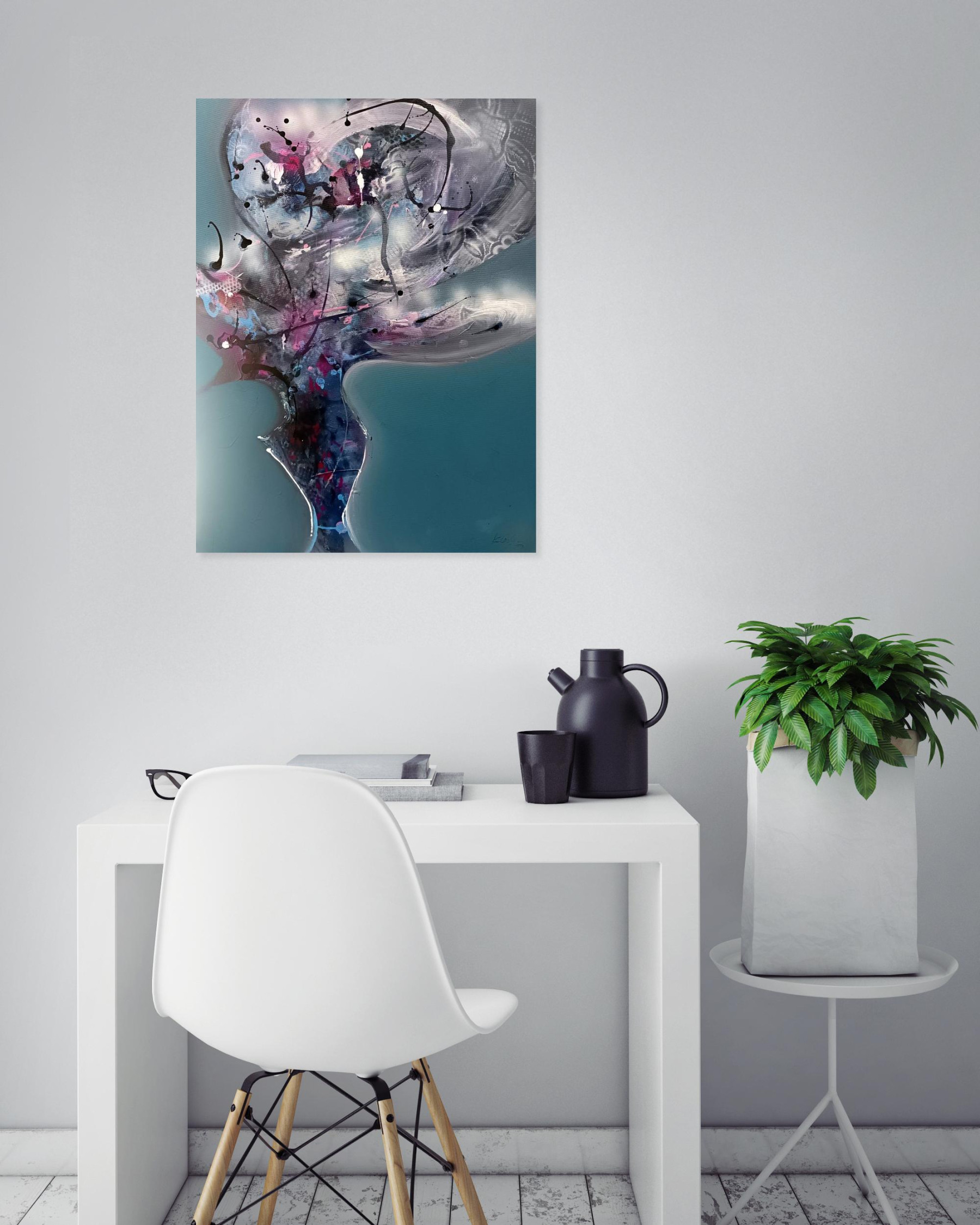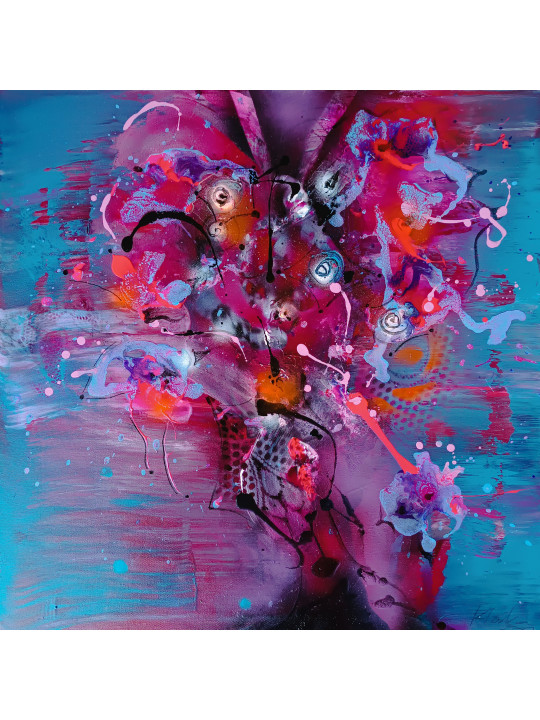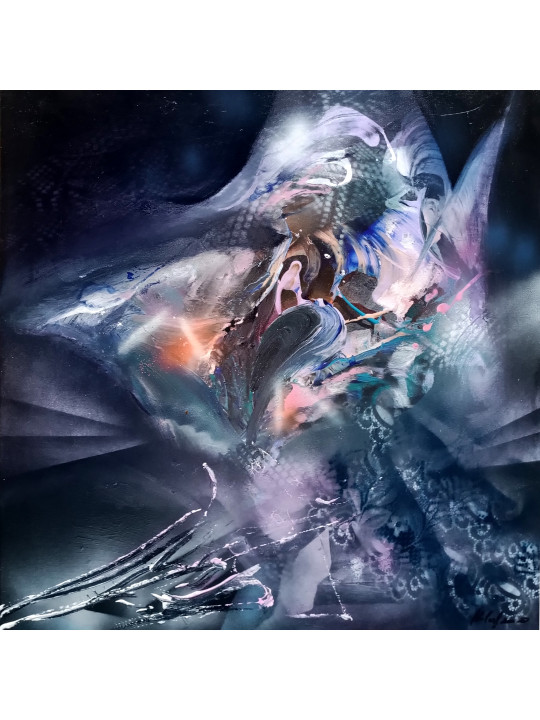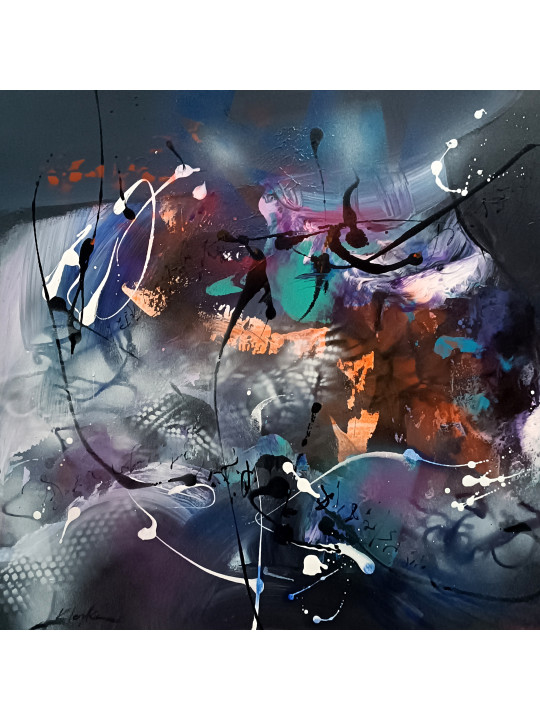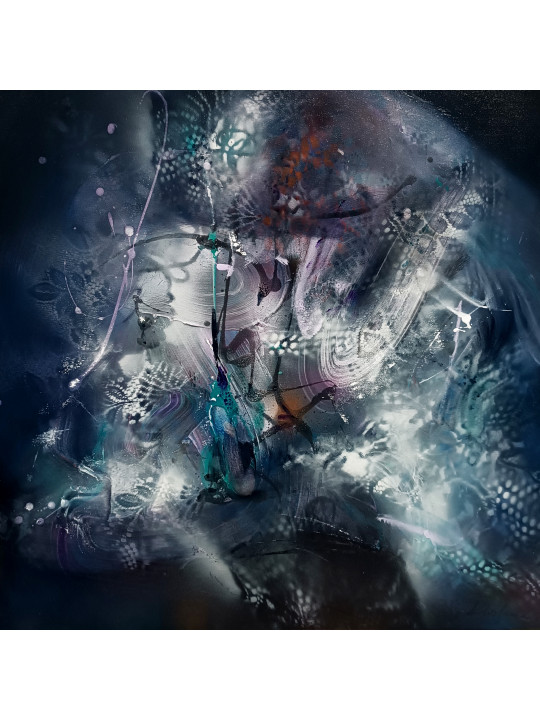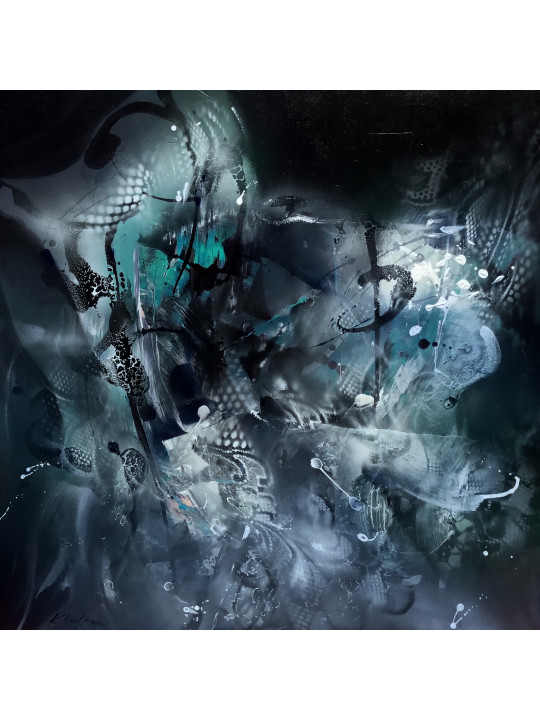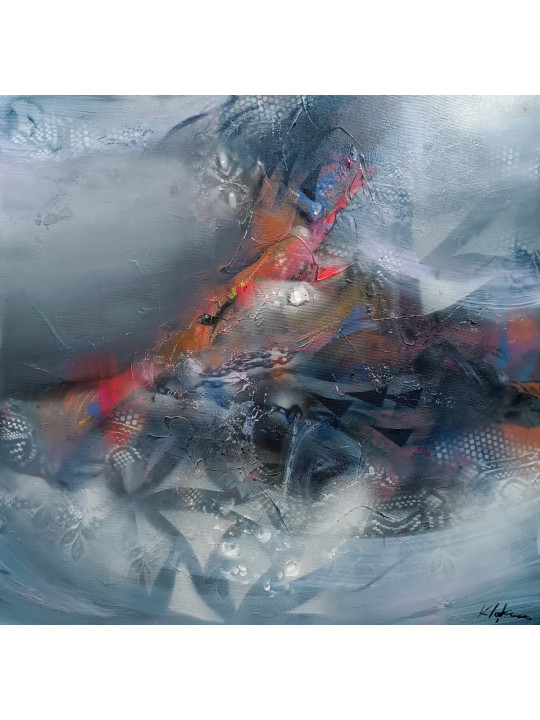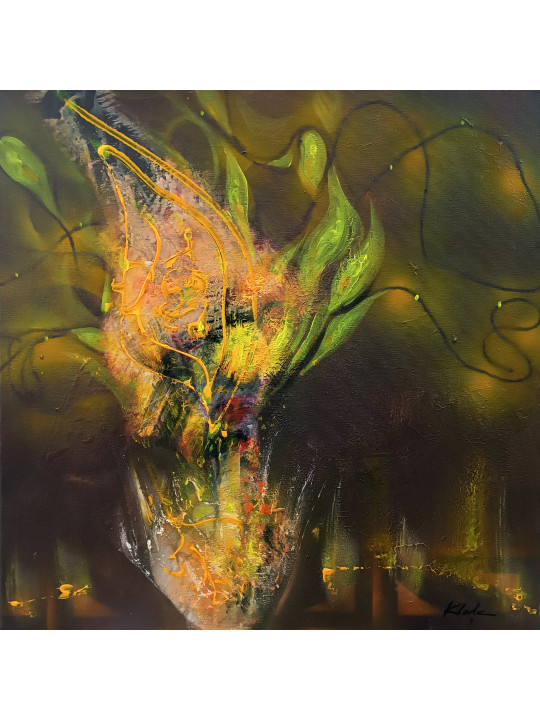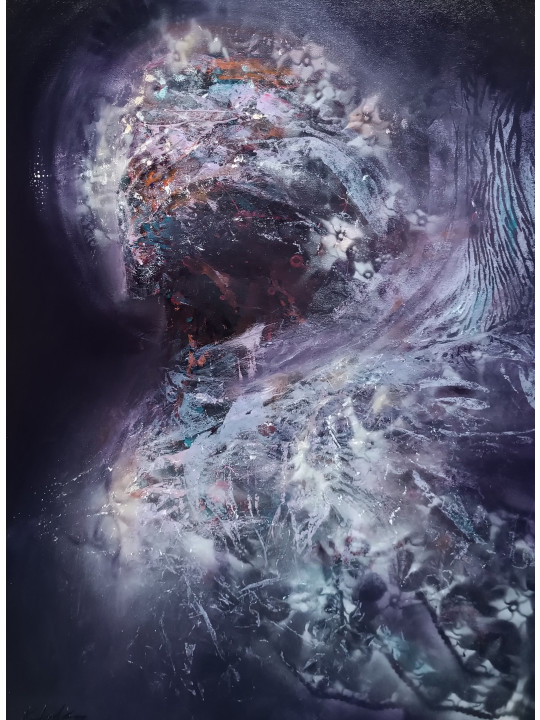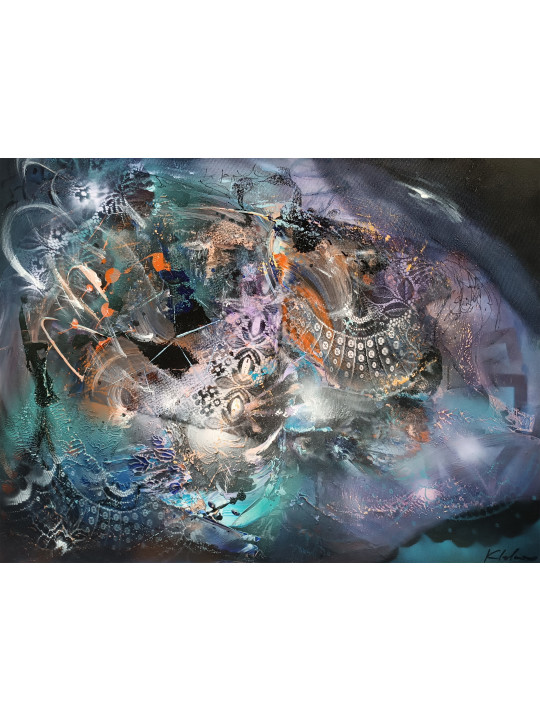
| Period | Contemporary (1945-today) |
|---|
Floral Memory on the Verge of Disappearance
(Kafkian Eternity – Signed 20 June 2025)
Mixed media on canvas, 60 x 80 cm
From the series: “Kafkian Eternity with Flowers at 7 PM”
In Floral Memory on the Verge of Disappearance, Ovidiu Kloska continues his profound visual inquiry into the poetic instability of form, memory, and the metaphysical structure of time. This piece pushes even further the conceptual territory marked by the Kafkian Eternity series — a body of work that transforms the motif of the flower into a spectral, vibrating entity caught between presence and dissolution.
At its core, this painting is not a still life in the traditional sense, but a suspended life, a visual entity in a state of perpetual transformation. The ghost of a floral silhouette seems to rise through a dense and immersive chromatic atmosphere — where teal, plum, indigo, and soft foggy whites swirl and collide. The structure is gesturally implied, not drawn, invoking the idea of memory rather than physicality. One does not “see” the flower so much as “feel” its apparition, its psychic resonance, as though it is being recalled from a distant, dissolving dream.
Kloska’s gestural abstraction here is particularly dynamic. Thick drips, splatters, and linear explosions of black and white pigment intersect with lushly textured washes. These gestures are not just expressive but conceptually embedded in the work — they interrupt the illusion of continuity, mimicking how memory itself is fragmented, unreliable, constantly rewritten. In this sense, the painting becomes an act of visual archaeology: digging through layers of pigment as one would sift through the sediment of forgotten emotions or buried identity.
The title, Floral Memory on the Verge of Disappearance, acts as both a poetic framing device and a key to the work’s interior logic. The word “memory” suggests a time that has passed, yet remains vivid and emotionally alive. The phrase “on the verge of disappearance” introduces tension, fragility, and the notion of transition — of a form that’s not quite lost but not fully here either. Kloska creates a powerful metaphor for the liminal state, a recurring theme in both Kafka’s literary work and the broader aesthetics of existential modernity.
From a contemporary perspective, the painting dialogues with current aesthetic paradigms where subjectivity, impermanence, and the deconstruction of the image are central. Kloska’s canvas is not an object to be deciphered as a code, but a surface to be entered emotionally, intuitively — it resists immediate definition. In that sense, it rejects the fixity of traditional representation and embraces the unstable, fluid logic of the present moment, much like works of Gerhard Richter, Cecily Brown, or Christine Ay Tjoe.
Moreover, the faint presence of ornamental lace-like textures, almost hidden in the vaporous upper layers, hints at domesticity and femininity — perhaps even mourning — without ever becoming illustrative. These almost imperceptible references place the painting in a rich symbolic zone: where the personal and the universal, the decorative and the expressive, the transient and the eternal all coexist.
In the context of the Kafkian Eternity with Flowers at 7 PM series, this work marks a mature evolution — a moment of quiet introspection that balances painterly force with restraint. If previous works in the series offered vibrant affirmations of energy and metaphysical presence, Floral Memory on the Verge of Disappearance moves toward meditation and dissolution, confronting the viewer with the vanishing point of sensation.
Kloska is not painting flowers — he is painting the absence after the flower, the scent of a thought, the visual echo of a moment suspended in emotional atmosphere. In doing so, he offers a deeply contemporary vision of abstraction as a language for spiritual presence, personal memory, and poetic resistance to time.
Ovidiu Kloska – The Artist Who Reveals the Boundaries of the Unseen
Biography and Education
Ovidiu Kloska (b. 1977, Roman, Romania) is a Romanian visual artist recognized internationally for his profound, visionary, and symbolically rich artistic universe. His educational background is as unique as his art: he first graduated from the Faculty of Electronics and Telecommunications at the “Gheorghe Asachi” Technical University of Iași (2000), then shifted his focus entirely to visual arts, completing both a Bachelor's and a Master's degree at the “George Enescu” National University of Arts in Iași (2013–2016).
Artistic Vision
Ovidiu Kloska’s work transcends form and matter, functioning as a visual meditation on the mystery of existence. His art explores spirituality, dreams, the subconscious, delirium, transformation, and transcendence. Through a rich palette, deep textures, and refined symbolism, he creates portals to mystical, unseen realms — alternate dimensions filled with silence, poetry, and inner tremors.
“Uniqueness begins with the very capacity of inventing a universe out of things shattered by time,” Kloska declares — a belief that resonates through every brushstroke. His paintings become emotional and spiritual landscapes, merging abstract expression with intuitive ritual.
Recognition and Global Reach
– Over 2,000 of his artworks are part of private collections worldwide, including Europe, the USA, Asia, and the Middle East
– In 2023, he was awarded “Artist of the Year” on the prestigious international art platform Singulart (Paris), selected among more than 10,000 artists globally
– Member of the Romanian Union of Professional Artists (UAP)
Selected Exhibitions
Alone to the Invisible Touch, “Nicolae Mantu” Art Galleries, Galați, Romania (2015)
Memory Mark, Focșani, Romania (2009) – a concept show on memory and the aesthetics of the urban human
Espace Cotos Art Gallery, Saint Tropez, France (2007) – personal exhibition invited by French painter Georges Cotos
RomanArt Gallery, Roman, Romania (2019) – exhibition in his hometown
Artist Statement
"My visual universe is an alchemy between dream and matter, between what can be touched and what can only be intuited. I constantly seek that poetic tension between chaos and order, between darkness and light.
In my recent series Between the Black and Divine, I dive even deeper into this liminal space — a place where the absence of light becomes sacred, and the void itself begins to whisper. Black is not just color or shadow; it is a presence, a cosmic silence from which all forms emerge and dissolve. It holds within it memory, trauma, rebirth, but also the magnetic pull of the divine unknown.
I am drawn to surfaces marked by time — rusted metal, peeling walls, tree bark — textures that carry stories and spiritual residue. They speak to me, not in words, but in vibrations, in a language older than language. I collect these fragments of the world’s decay and translate them into my own visual grammar.
There is no separation between the physical and the spiritual in my art. The gesture becomes prayer, the pigment becomes energy, and the canvas transforms into a threshold. I am not painting objects. I am revealing frequencies — fields of tension between the seen and the unseen, between noise and silence, between the wound and the transcendence it can become.
To me, painting is an act of spiritual decoding — a ritual of opening the invisible into form, of letting the subconscious and the sacred collide. Each artwork is not just a finished piece, but a living process, a moment of surrender, and an invitation to the viewer to enter a space of contemplation, mystery, and transformation."
 English
English Français
Français
